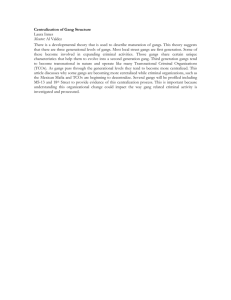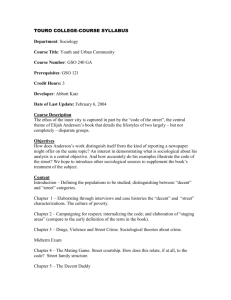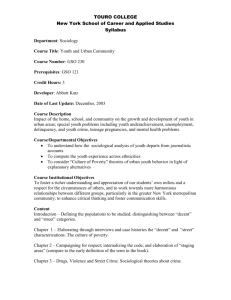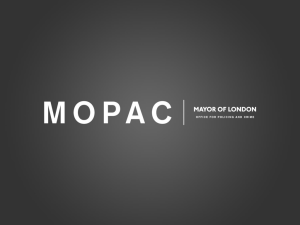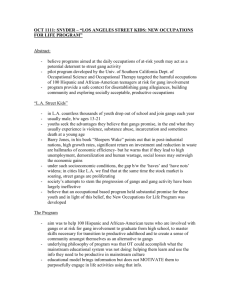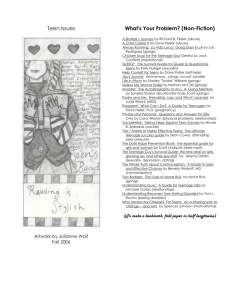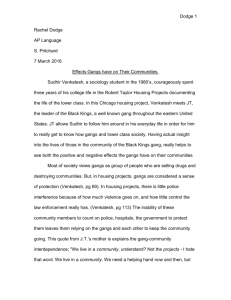Gang History - History of South Central, Los Angeles
advertisement
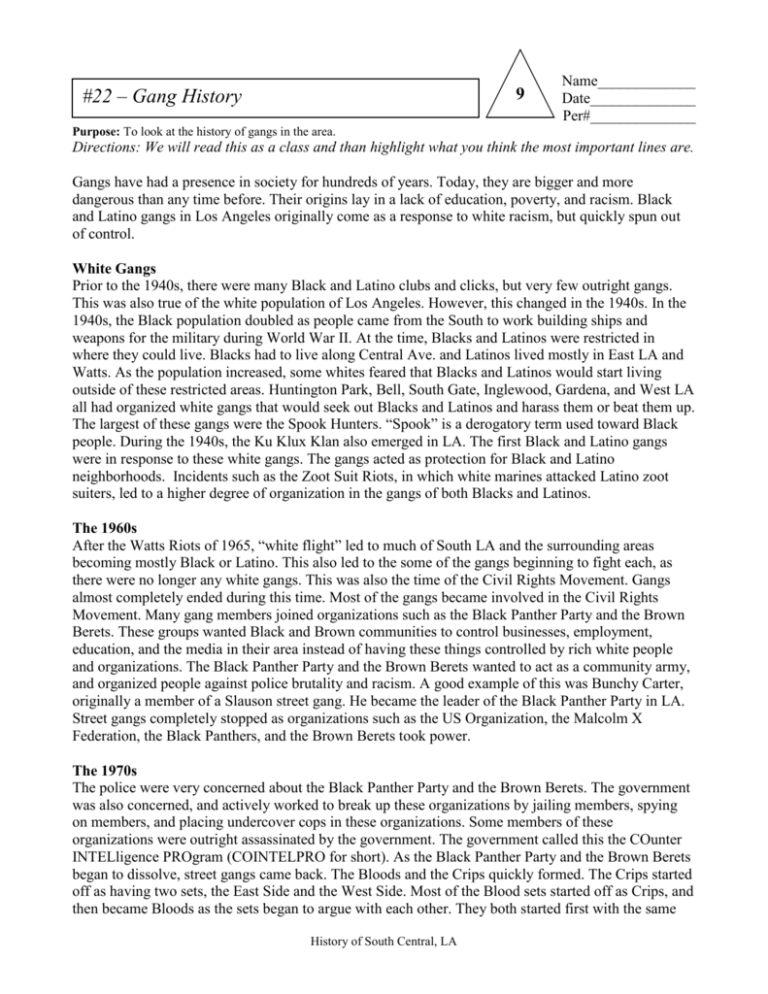
#22 – Gang History 9 Name_____________ Date______________ Per#______________ Purpose: To look at the history of gangs in the area. Directions: We will read this as a class and than highlight what you think the most important lines are. Gangs have had a presence in society for hundreds of years. Today, they are bigger and more dangerous than any time before. Their origins lay in a lack of education, poverty, and racism. Black and Latino gangs in Los Angeles originally come as a response to white racism, but quickly spun out of control. White Gangs Prior to the 1940s, there were many Black and Latino clubs and clicks, but very few outright gangs. This was also true of the white population of Los Angeles. However, this changed in the 1940s. In the 1940s, the Black population doubled as people came from the South to work building ships and weapons for the military during World War II. At the time, Blacks and Latinos were restricted in where they could live. Blacks had to live along Central Ave. and Latinos lived mostly in East LA and Watts. As the population increased, some whites feared that Blacks and Latinos would start living outside of these restricted areas. Huntington Park, Bell, South Gate, Inglewood, Gardena, and West LA all had organized white gangs that would seek out Blacks and Latinos and harass them or beat them up. The largest of these gangs were the Spook Hunters. “Spook” is a derogatory term used toward Black people. During the 1940s, the Ku Klux Klan also emerged in LA. The first Black and Latino gangs were in response to these white gangs. The gangs acted as protection for Black and Latino neighborhoods. Incidents such as the Zoot Suit Riots, in which white marines attacked Latino zoot suiters, led to a higher degree of organization in the gangs of both Blacks and Latinos. The 1960s After the Watts Riots of 1965, “white flight” led to much of South LA and the surrounding areas becoming mostly Black or Latino. This also led to the some of the gangs beginning to fight each, as there were no longer any white gangs. This was also the time of the Civil Rights Movement. Gangs almost completely ended during this time. Most of the gangs became involved in the Civil Rights Movement. Many gang members joined organizations such as the Black Panther Party and the Brown Berets. These groups wanted Black and Brown communities to control businesses, employment, education, and the media in their area instead of having these things controlled by rich white people and organizations. The Black Panther Party and the Brown Berets wanted to act as a community army, and organized people against police brutality and racism. A good example of this was Bunchy Carter, originally a member of a Slauson street gang. He became the leader of the Black Panther Party in LA. Street gangs completely stopped as organizations such as the US Organization, the Malcolm X Federation, the Black Panthers, and the Brown Berets took power. The 1970s The police were very concerned about the Black Panther Party and the Brown Berets. The government was also concerned, and actively worked to break up these organizations by jailing members, spying on members, and placing undercover cops in these organizations. Some members of these organizations were outright assassinated by the government. The government called this the COunter INTELligence PROgram (COINTELPRO for short). As the Black Panther Party and the Brown Berets began to dissolve, street gangs came back. The Bloods and the Crips quickly formed. The Crips started off as having two sets, the East Side and the West Side. Most of the Blood sets started off as Crips, and then became Bloods as the sets began to argue with each other. They both started first with the same History of South Central, LA ideas of community power as the Black Panthers had, but without the leadership of the Panthers, both street gangs quickly spiraled out of control. Around the same time, the 18th Street Latino gang began to form and had a similar history. The Mexican Mafia was also established in jails in California. dThere were several attempts at truces during this time, but all of them were broken up by police. 1980s The 1980s saw a huge increase in the number of gangs. All of the ideas of the Black Panther Party and the Brown Berets were completely lost by this time. The gangs were exclusively focused on territory and crime. The beginning of the Crack Epidemic only worsened the effect, as the number of gang sets increased into the hundreds and spread out throughout the country. The neighborhoods of South Central became very separated at this time. 1990s As the influence of gangs spiraled out of control with the introduction of drugs to the community, the early 1990s saw some of the highest homicide rates ever. However, there was a major drop in homicides after the LA Riots. Much of this has to do with the gang truce that was established among the projects in Watts. In 1993, there was also a major truce among Latino gangs to end drive-bys, and the killing of innocent people. Although the 1990s began very badly, it ended with a decline in the number of gang-related deaths. 2000 and Beyond Today, gang-related homicides are at an all time low. Many gang members have found themselves in jail due to a huge police focus on reducing the crime rate. At the same time, there has not been a large decrease in the number of gangs. Today, the political nature of gangs has been completely lost. For many people, gangs fill some sense of family or belonging that was missing in their life, however, it has come at a price. Gangs have had a destructive effect on the community. They have torn apart communities rather than build unity. The media has glorified and created an image of gang members as heroes and survivors. But most people that have been touched by gang violence in their own personal lives know that there is very little postivity that comes out of gangs in the community. History of South Central, LA
